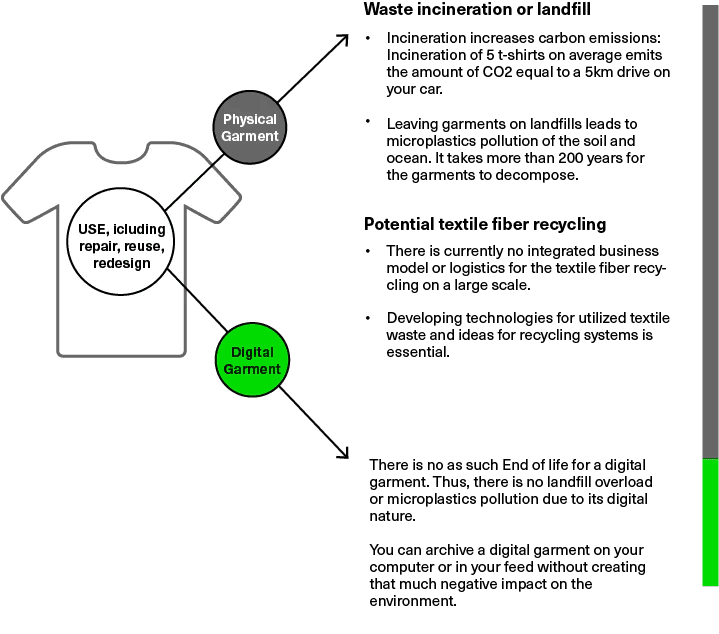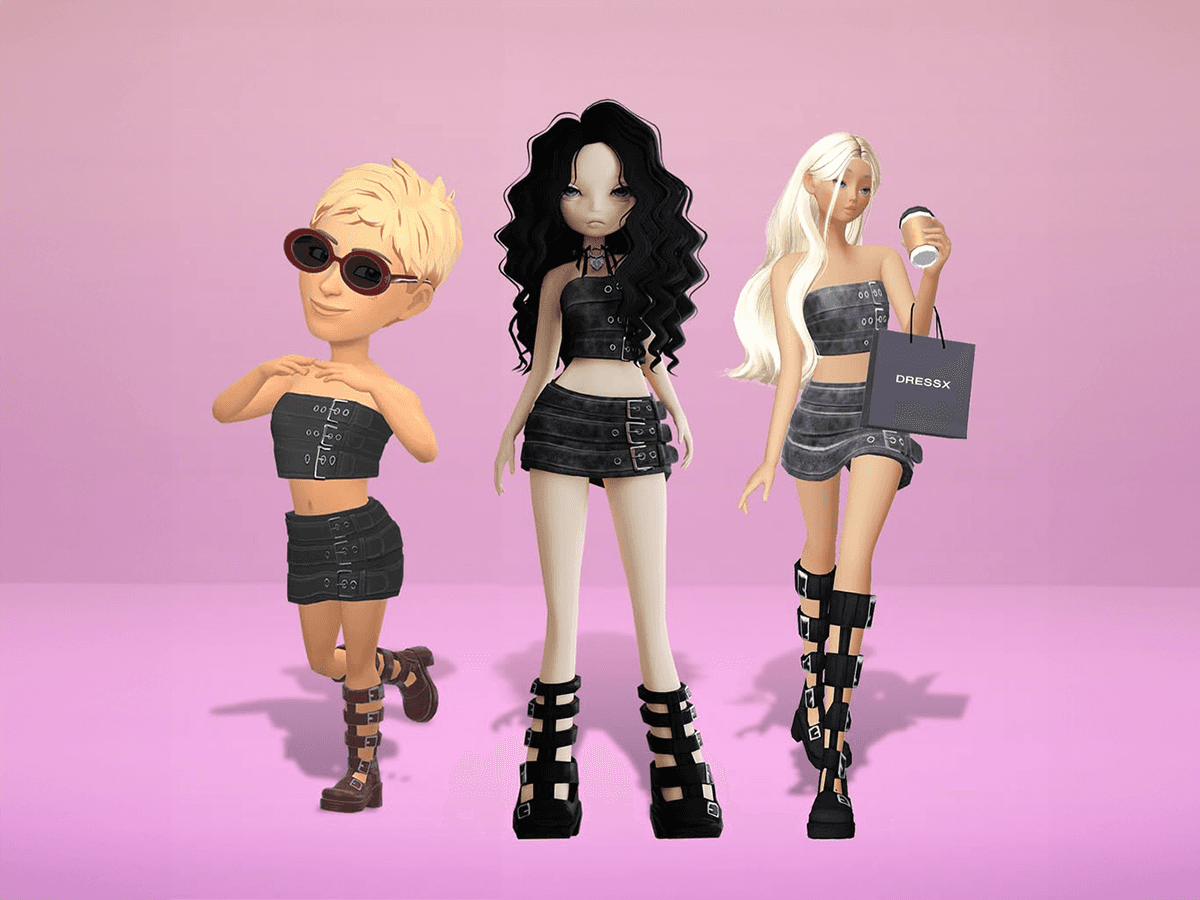Fast fashion makes shopping for clothes more affordable, but it comes at an environmental cost. As consumers worldwide buy more clothes, the growing market for cheap items and new styles is taking a toll on the environment. On average, people bought 60% more garments in 2014 than they did in 2000. DressX shares the beauty and excitement that physical fashion creates, but we believe that there are ways to produce less, to produce more sustainably, and not to produce at all. At the current stage of DressX development we aim to show that some clothes can exist only in their digital versions. Fast Fashion of the Future is Digital Fashion. We conducted a study to understand the impact of digital fashion in comparison to traditional fashion. For our study we used the lifecycle process flowchart for the traditional physical garment:


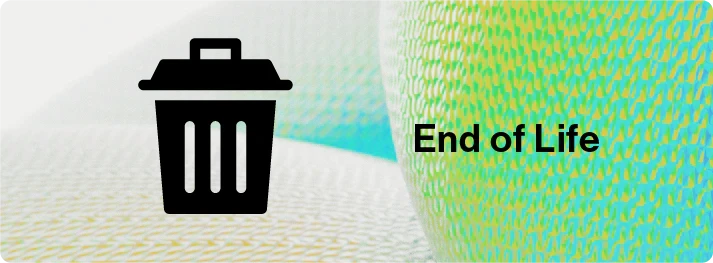
We analyzed different case studies for the processes mentioned above in order to compare the environmental impact from the traditional and digital fashion. Our aim is to show analytically and statistically that digital fashion is the way to make fast fashion sustainable. We are committed to continue our research of digital fashion environmental impact so that we can work to improve our environmental performance.
Production
Case study # 1 Environmental impact of production - traditional fashion VS digital fashion
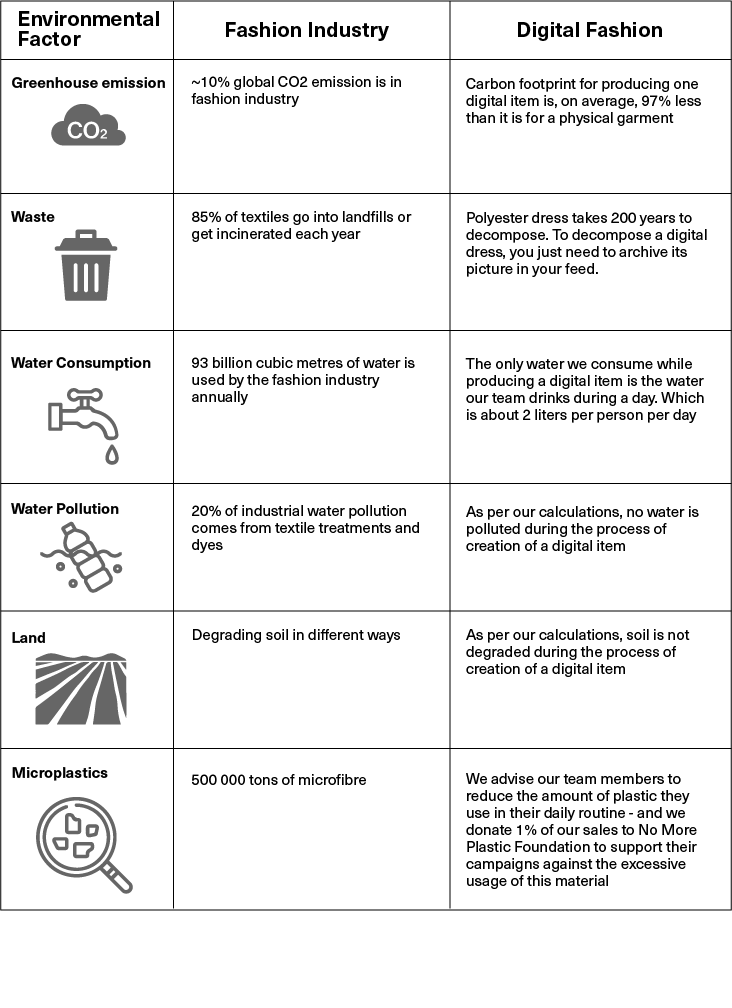
Promotion & Distribution
Case study # 2 Environmental impact of garment distribution to influencers
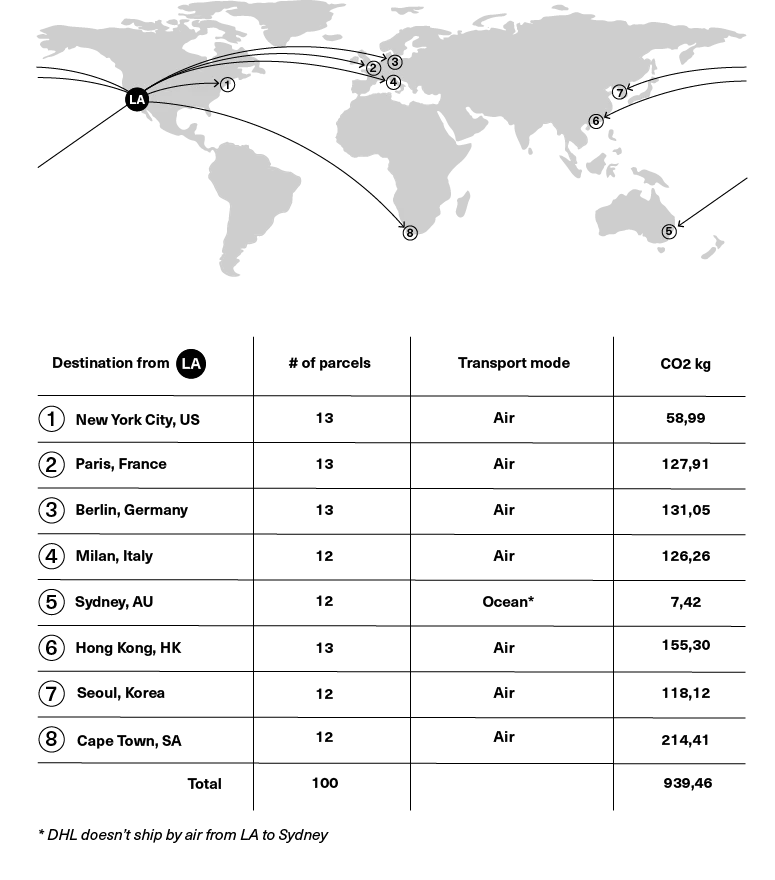
Let’s compare the total environmental effect for the production and distribution of 100 physical dresses vs 100 digital dresses.
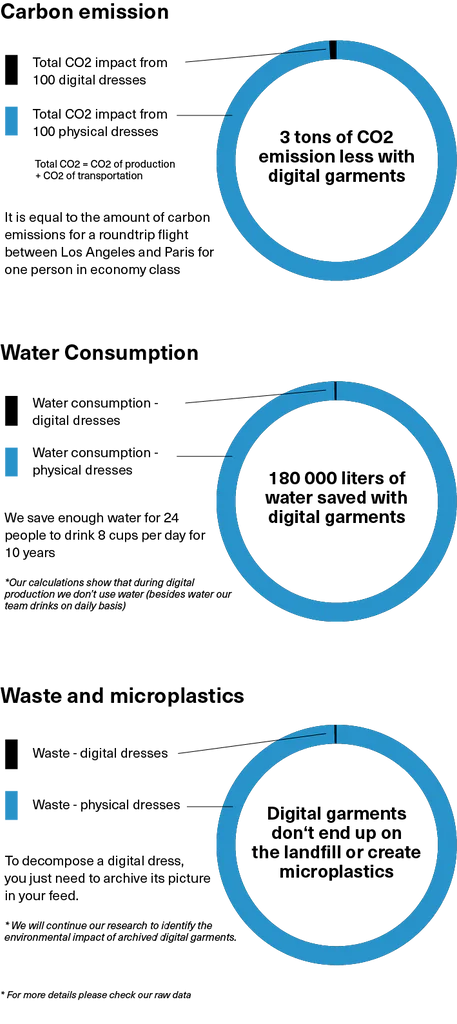
Use
Case study # 3 Environmental impact from cleaning clothes
Let’s continue the story of 100 polyester dresses from the previous case. We will look at the environmental effect from cleaning these dresses — washing, drying, and ironing. We perform this particular study, knowing that one physical garment during its life cycle could be cleaned from 50 to 100 times. Thus one-time cleaning of 100 dresses will also represent the USE phase of an average physical garment. For our study, to compare the environmental impact of real garments and digital garments during the USE phase, we added a dry cleaning option for the physical garments.
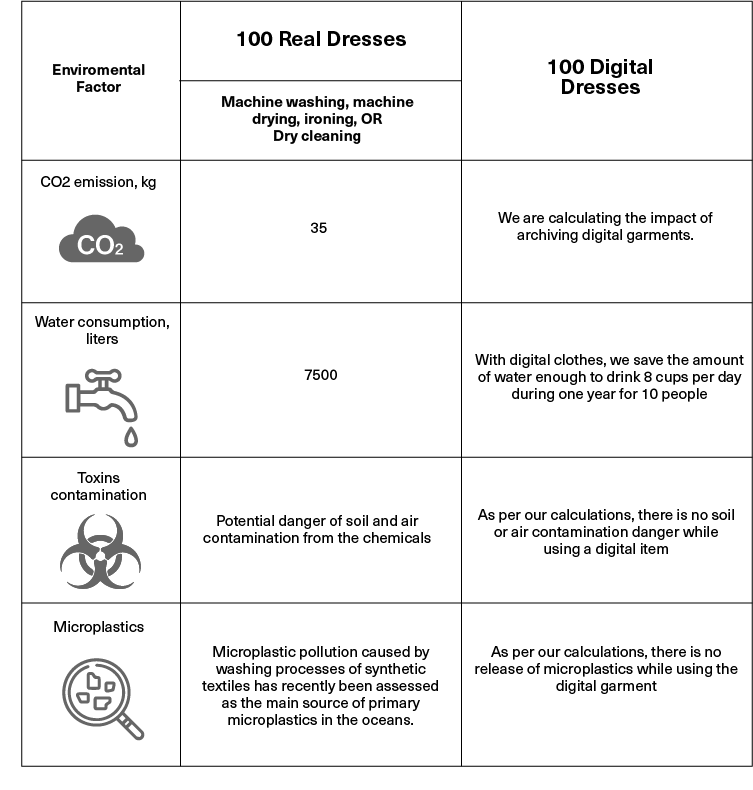
Current trends in the fast fashion industry have led to a dramatic increase in the number of textile waste. Let’s compare the End of life phase for physical garments and their alternative — digital garments.
